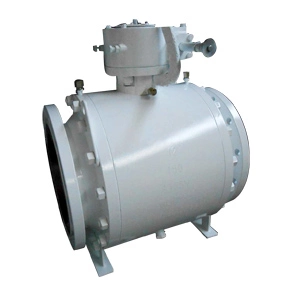1.
Selecting corrosion resistant materials according to corrosive media
In the production practice, the corrosion of the medium is very complicated. Even if
valves made of the same material have the same media, the conditions of each valve being corroded by media vary from each other due to the different concentration, temperature and pressure of media. If the temperature of the medium is increased by 10℃, the corrosion rate will be increased by about 1 to 3 times.
The concentration of the medium can greatly influence the corrosion on the valve material. If the lead is in the sulfuric acid with small concentration, there will be a very small amount of corrosion. When the concentration exceeds 96%, the corrosion increases rapidly. On the contrary, when the carbon steel is in the sulfuric acid with the concentration of 50%, the corrosion is the most serious. When the concentration is decreased to about 6%, the corrosion is sharply reduced.
From the above cases, we can certainly reach the conclusion that the selection of the valve's material is supposed to be based on the specific circumstances as well as the analysis of various factors affecting corrosion.
2.
Using non-metallic materials
Non-metallic materials have good corrosion resistance. As long as the non-metallic materials are able to meet the operating temperature and pressure requirements of valves, they can be adopted as raw materials of valves, which will not only solve the problem of corrosion, but also save the precious metals.
Valve bodies, bonnets, linings, sealing surfaces, etc. are usually made of the metallic materials, while gaskets and packing are often made of the non-metallic materials.
Plastics such as polytetrafluoroethylene and chlorinated polyether as well as rubber materials such as natural rubber, chloroprene rubber and nitrile rubber can be used as raw materials for valves' linings, while valve bodies can be made of the cast iron or carbon steel, which will not only ensure the strength of the valve, but also protect the valve from corrosion.
The pinch valve is designed by utilizing the excellent corrosion resistance and excellent performance of the rubber. There are more and more sealing surfaces and gaskets of valves made of nylon, natural rubber, synthetic rubber, plastics such as polytetrafluoroethylene, etc.
These non-metallic materials used for sealing surfaces have excellent corrosion resistance and good sealing performance, which are particularly suitable for media containing particles. However, they have the disadvantages like low strength and poor heat resistance, which makes them only have limited applications.
The emergence of the flexible graphite has brought the non-metallic material into the high temperature field, which solves the long-term leakage problems of packing and gaskets.
